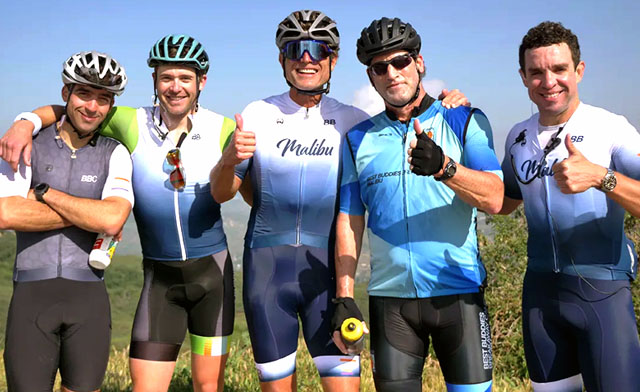Podium or Pack Finish
After viewing hundreds of files associated with podium finishes, it was evident that there are similar trends among top finishers. In order to achieve a podium finish, it is essential that riders are able to effectively analyze their own files. The information below will equip you with the knowledge to analyze your personal files. Once you understand your own files, you can make adjustments to your training, in turn yielding better race results. However, before a rider can comprehend power related precursors associated with winning races, they have to clearly understand three very basic power related terms. Normalized Power (NP), Intensity Factor (IF), and Training Stress Score (TSS) are clearly defined in the following link.
Training Peaks- IF, NP, AND TSS
The common denominator between winning files is the riders FTP (Functional Threshold Power) in relationship to their body mass. FTP differs greatly between podium finishers and pack finishers. For example, riders that are consistently doing well in their respected category have the ability to sit at or just below their FTP for longer periods of time than those finishing in the pack. Within a power based context, the rider is able to maintain 90-105% of their FTP for 30-40 minutes. In order to provide further evidence of the relationship between FTP and race finish, I have compared two files from athletes I coach. The files and correlating data points are both from the first race of the season, the Rosewood Series 40+ which was held on 1.3.16. One rider won the race, while the other rider finished within the pack.
| Podium(1st) | Pack Finisher | |
| FTP-Watt/kg | 4.25 W/kg | 3.5 W/kg |
| Entire Race NP-Watts/kg | 285w at 3.39 W/kg | 288w at 2.97 W/kg |
| Peak (1-2 minute power) | 4th quarter | 1st and 4th quarters |
| Time at 0-15 watts | 17% or 16:44 | 13% 16:18 |
| Time Spent Below FTP | 62% | 50% |
| USAC Category | 2 | 2 |
The normalized power for both riders and their respected weight stands out as I analyze the data. Although the normalized power is essentially the same, the difference outside of the weight is how much harder the pack finisher had to work to generate 288 watts. With an FTP at 3.5 watt/kg the rider has to work exponentially harder than the winner to ride the same speed. Not only does the pack finisher weigh more, but he also produces less power at threshold as the podium finisher. Other attributes synonymous with riders earning podium finishes:
- Zero Time (0-15 watts) - 20% of the race or greater is the target I give most racers. Its not which rider is the strongest overall, it is who is the strongest when it truly matters.
- Time below FTP- 60% or greater is the benchmark I desire. If youre not seeing 60% or more of the race close to the 60% mark there are a few issues. You are either off the mark within the FTP/W:kg column, your position(s) within the pack is off, or youre just racing too aggressive too much of the race.
- Placement of your Peak NP (Neuromuscular Power) and VO2 power within the race is also important. These values reflect peak power in the above ranges being dropped during the 3rd and 4th quarters of the race. Accomplishing this allows you to give yourself the best odds of returning a result.
All too often I hear arguments saying that weight doesnt matter. However, the data shows that weight does impact a riders finish. Generally, the same people saying that weight does not matter are the riders that finish with the pack. Therefore, if your goal is to land on the podium, its paramount that you possess comparable FTP per your body mass to those that are podium finishers.
Examine the graph below. The data presented in the graph provides further evidence of the importance of FTP per body mass. This should encourage you to examine and analyze your own data. Upon analysis of your data, you should be able to design a training plan that enables you to achieve a podium finish.
This graph allows you to rank your current power profile against those in the catagory you are in. How you race those strengths will determine race results.
Your staying power or FTP, the point in the race you have the highest propensity to burn your matches, and mastering pack placement /coasting are directly correlated to individual race results. Furthermore, if your power/ weight metrics are off the mark, you are at the mercy of those dictating the outcome of the event. In most instances, riders with a subpar FTP value arent training, they are simply riding. I see riders who are completing 10+ hrs of saddle time with a lot of pack riding. Unfortunately, those athletes are not devoting enough time or emphasis on energy ranges specific to eliciting physiological growth.
If you are struggling with your training or reviewing data, contact me directly I would love to help 845-629-8299.



